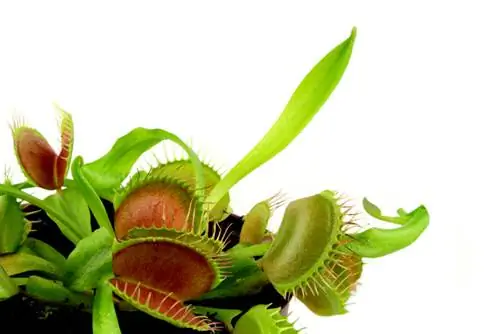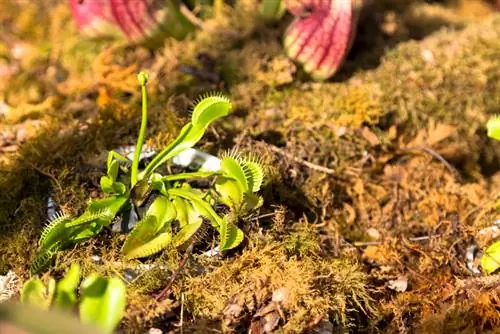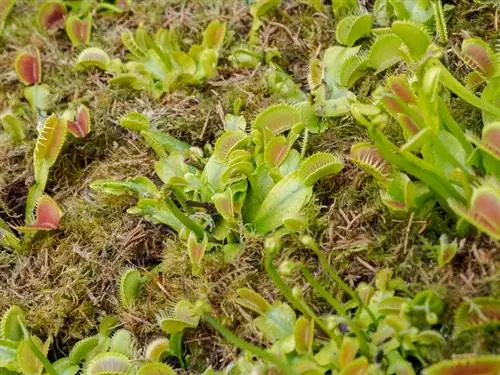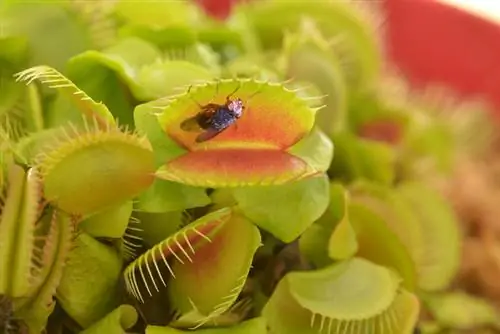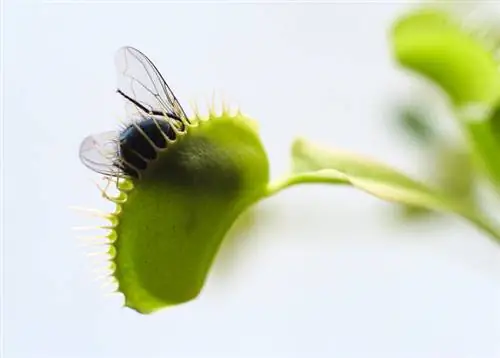- Author admin [email protected].
- Public 2023-12-16 16:46.
- Last modified 2025-01-23 11:20.
Unlike other carnivorous plants, Venus flytraps catch their prey with snap traps. The inside of the trap, which resembles a trap, is red and magically attracts insects. But as soon as they settle on the surface covered with tactile hairs, the trap snaps shut and the Venus flytrap begins digestion.
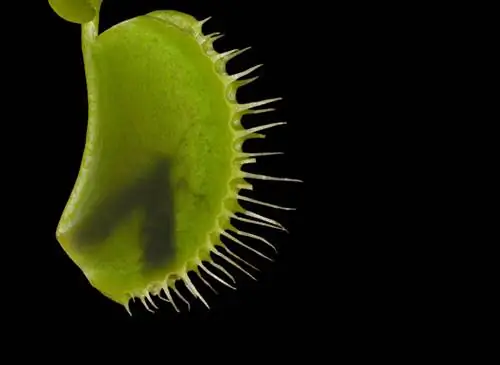
How does the digestion of a Venus flytrap work?
Digestion in a Venus flytrap begins when chemical and movement stimuli confirm that the captured object is a digestible insect. This releases a secretion containing protease, amylase, phosphatase and ribonuclease to break down the prey and remove nutrients. The process takes up to ten days.
This is how the plant checks its prey
Not every object that falls into the clutches of the Venus flytrap is edible prey. Before digestion begins, the plant checks whether it is actually an edible insect.
There are various receptors inside the trap that react to chemical and movement stimuli. If the caught object is not edible, the trap will open again after a few hours.
What happens when a Venus flytrap is digested
If the prey turns out to be a digestible insect, the digestion process begins. To do this, a secretion is released that
- Protease
- Amylase
- Phosphatase
- Ribonuclease
contains. The secretion dissolves the prey and deprives it of nutrients. This process takes up to ten days. The trap then opens again.
All that remains are indigestible remains such as the chitin shell or the legs. Do not remove these remnants, otherwise the trap will close again.
After seven catches it's over
Unfortunately, the lifespan of a Venus flytrap's traps is not unlimited. It only opens a maximum of seven times. After the seventh time at the latest, the trap and the leaf die. This is a normal process and is not due to a care error.
So don't play around with the traps too often and don't put your finger in the trap for fun. If at all, only feed live insects that are no more than a third the size of the trap flap.
If the trap dies beforehand, it may be due to an oversupply of food or because the insect caught was simply too big.
Tip
The closing of the trap of a Venus flytrap happens so quickly that you can hardly follow the process with your eyes. The movement is one of the fastest possible in the animal kingdom.


